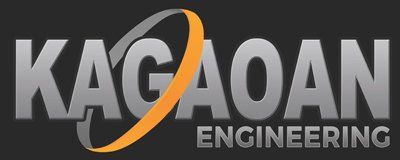Engineering Analyses and Computations - NYC, Manhattan, The Boroughs, Nassau County, Suffolk County, Long Island, and New Jersey - Kagaoan Engineering

Engineering Analyses and Computations Specialists
Understanding the in-depth processes and equations that direct the scope of any project requires exceptional oversight and careful attention. Engineering specialists work hard to keep projects on track, from the first scraps of notes to the final blueprints. Kagaoan Engineering knows the importance of every number, from the soil density to load changes and ground forces.
Our team oversees every build aspect to discover the best and most effective ways to develop and form the final product. With extreme care, our staff has the experience and skills in granular flow, microdynamics, and simulation modeling to ensure each project fulfills the needs and requirements of the engineering calculations and code requirements in NYC and the surrounding areas, including the Tri-state region.
Contact us
for free consultation.
Basic terminology in engineering analyses and project advancement
Fluid dynamics
- the study of gas and liquid materials and how they move above and in the ground
Scale modeling
- drawings or computer designs of a project or work area. For example, a replica of a skyscraper that is several times smaller than the final product but equivalent in features and structure
Noise abatement
- ways of minimizing noise coming in and out of the construction area. This term also refers to complying with city sound ordinances and different modeling options to achieve optimal sound reduction at project completion
Project simulation
- graphic representations of the build. Pictures, drawings, and computer models showing each phase or before and after completion are common in these models
Computational science
- a problem-solving technique using computers and algorithms to figure out the most complex problems engineers and builders face as they design and progress through a project
Structural condition
- the material strength, look, and longevity of a building or structure. Code enforcement may require a condition assessment for permits or building code compliance for construction projects in NYC
Groundwater dynamics
- is a physical representation of how water seeps into the soil and around foundations. Water density levels are essential for determining the type and depth of foundation for any new structure
Soil density
- how loose or tight the soil beneath a building requires borehole testing available through engineering analysis
Solid mechanics
- the movement or stiffness in the soil. How structures and the earth interact with each other and affect each thing requires extensive calculations and mathematical figuring. Using tools that provide ample space and access for all team members is critical. For example, whiteboard pages with handwritten calculations for foundation depths, horizontal and vertical loads, and soil displacement are useful tools in construction projects
Structural dynamics
- forces on buildings like traffic or wind movement require projections and calculations to determine the project's strength. For instance, a bridge will experience lots of cars and trucks running over the top of the structure with the wind blowing under and above it. Foot traffic is also a factor with pedestrian crossings and bridges
Every force that can affect a structure needs examining before the beginning of the project. Engineers use complex mathematical computations to help them figure out the loads and stresses that will affect a particular building design. Then, they decide how to create the structural design while adapting the project to be safe, compliant, and effective for its purpose. Whether it is an addition to an existing building, a new project, or a pathway, our team at Kagaoan Engineering can offer guidance and assistance with modeling, mathematical figures, 3D representations, projections, and more.
New York Code Requires Special Oversight By A Qualified Geotechnical Engineer
Every architect and builder needs an engineering analyses and computations technician who understands the difficulties and problem-solving requirements of any construction project in NYC. From maintaining the integrity of the soil beneath a historic building, preserving a retaining wall, or building a new structure, our team has the experience and qualifications to handle any size or scope project.
How Engineers Manage Structural Calculations and Analyses
Many companies use engineering software that helps compute complex equations and minimize human errors. However, there are times when a pad and paper work best. Collecting these ideas and filing them with the computer designs in a cloud program helps keep everyone in the loop. Members of our firm can connect virtually and analyze problems in real-time.
Providing easy access to pertinent information helps projects flow better. Some calculations apply to other projects. Our engineering calculations allow us to find the best solutions for common things like low soil densities in a particular location or vibration mitigation for buildings near high-traffic areas.
Worldly Applications for Engineering Analysis
Calculating how much the ground will shift because of the density of the soil and the force of a new building requires a lot of figuring. However, engineers understand these equations and calculations and can translate them to make them more understandable during project meetings. Mathematical computations allow engineering teams to figure out the best monitoring equipment for buildings in close range, like skyscrapers in NYC. Engineers can use highly intuitive programs and projection modeling to predict what forces a structure will withstand in a particular area when designing a new build.
You can reach our team of engineering analyses and computations specialists at 516-208-1533. Our engineers can inspect current equations and figures or help your team start from the beginning of the project. With decades of experience helping builders and construction teams in NYC, we can help your visions come to life. Check out our peer review and service pages to find out more about our brand.
Please contact us
today!
About Kagaoan Engineering
Every member of Kagaoan Engineering is an experienced professional who brings distinct strengths and specialities to the company. We work together as team to ensure that your project has the skill sets required to succeed.

